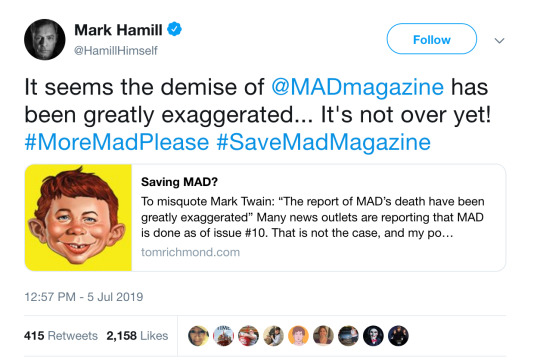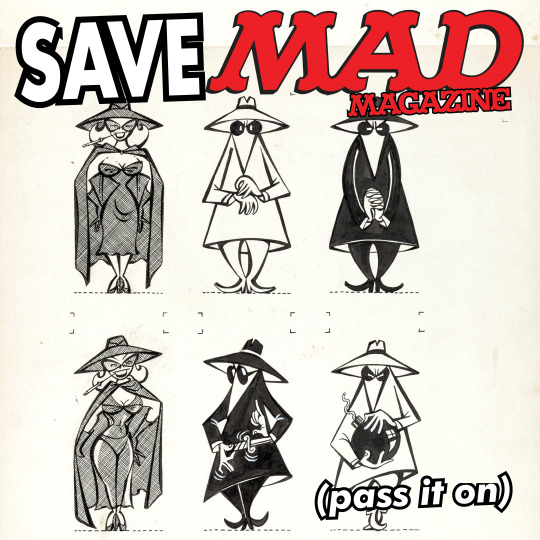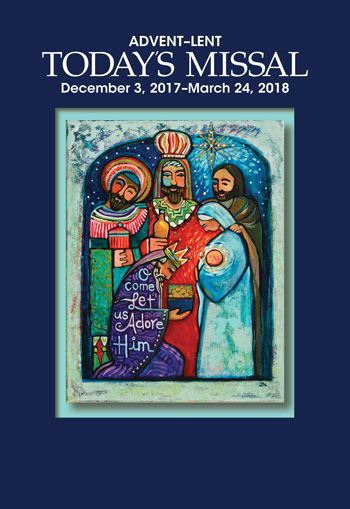#This originally was gonna have a Read More for the 4th page illustration
Explore tagged Tumblr posts
Text
I Met Her In A Dream (Part 2)







Folly tells her perspective and recounts her findings upon meeting Moore.
< Part One
#🖼️ meera art.png#❤️ follmoore 💜#👁️ to dance with death 👁️#folly regretevator#regretevator folly#regretevator selfship#regretevator self insert#self ship#self shipping#self ship community#s/i x canon#s/i x f/o#self ship art#self ship comic#This is my third time posting this... Tumblr's being weird with this post#This originally was gonna have a Read More for the 4th page illustration#And doing the long version unlike the first part's post#Anyways AAAH THE COMIC IS DONE!!#I was worried about the 4th to 6th page because those are fully coloured illustrations#But all of them went well! Especially the 4th page ^^#EDIT : IT' FINALLY POSTED IN THE PROPER ORDER OH MY GODDDD UGH 🎉🎉🎉🎉🎉🎉#🪻Moore🪻
36 notes
·
View notes
Note
When reading a book, have you :
a. Finish a book, even when you dislike the mc until the end but love the story (What book?)
b. Finish a book, even when you dislike the story but love the mc (what book?)
c.Finish a book, even when you dislike the mc and story but love the worldbuilding (what book?)
d. Finish a book, even when you dislike the mc, story, worldbuilding but still finish it for whatever reason (what book?)
Since it's the internet, I feel compelled to put up a disclaimer for this kind of question first before answering:
"Whatever answer I'm gonna put down here is solely my personal opinion. If I happen to dislike something you like, it doesn't mean I'm badmouthing your favorites; we just happen to have different preferences. I'm not going to entertain any questions or statements through whatever channels that are criticizing me for liking or not liking certain things. Thank you for your understanding."
Now, with that already out of the way...
a. Harry Potter. I think this is caused by my age when I first knew about it, and my age when I actually read the original book.
I got into HP through the first movie, which was in 2001, so I was in 3rd or 4th grade at the time, and I kept following the movies until the final one in 2011. I've always loved fantasy stories because I grew up reading a lot of fairy tales, so it wasn't hard for me to instantly fell in love with HP.
That said, I didn't have the money to buy the book back then. I was able to purchase the books much later when I was almost 30 years old. When I read it, I actually didn't like the main character (and some other characters) that much, even though I didn't have that problem at all when following the movies in the past. Later, I realized it's because I could no longer relate to a lot of the characters' emotions and logics because the books are originally meant for young audience and I was simply too old to relate to the characters at this age. 😂
b. I couldn't come up with any titles even though I'm pretty sure there must be at least one or two. I'm the kind of person who "characters > story" so even though the story may not be as good, as long as I like the characters, I usually would still be able to enjoy it until the end.
c. TGCF. Rather than dislike, I think I probably went into it with too much expectation in my head that when it's not like what I imagined it to be, the entire experience ends up feeling underwhelming.
I've read SVSS and MDZS, and I love both of them. So when I saw a lot of people hyping up TGCF, I imagined it would be more "WOAH" than the first two, especially because I also got art-baited by STARember's manhua illustrations. That said, I do like several characters other than the main characters (I ship FengQing and QuanYin) and I always love MXTX's worldbuilding since they're so vivid and amazing to explore.
(And if I have extra money this year, I'm still gonna complete my San Lang cosplay because I've already cosplayed Luo Binghe and Lan Wangji, and my OCD definitely isn't gonna let me leave out the last one, lmao).
d. Guardian/Zhen Hun by Priest.
Ironically, Priest is my favorite danmei author but even though a lot of my favorite danmei are written by her, the danmei I don't like the most is also hers. 😂
I really don't know if it's because the fan-translation I read wasn't pretty clear in translating the stories or not (I mean, I can't complain about it since I'm reading for free), but I just can't bring myself to like any of it, the story, the characters, the world, until the final page.
The reason why I finished it is because I don't want to to jump to early conclusions before actually reading the whole thing. Unfortunately, my impression of it does not improve even after finishing the story.
4 notes
·
View notes
Text
Can Fans save MAD magazine? Let’s Hope So.
By Chet Reams
A few days ago, news broke that sent shockwaves around the comics world; MAD magazine would be leaving newsstands and ending new material in the iconic and 65-plus-years-running humor comic magazine. The news broke by way of Facebook group “MAD magazine and Alfred E Neman Collectors’ Club”* from MAD contributor Stan Sinberg and went almost immediately viral. From there , came wild speculation - was MAD magazine ending for good?; Was it just leaving newsstands for a while? Or was something else afoot? Many news outlets picked up the story, stating that “MAD magazine was cancelled” but it turns out that is not the case.
A bit of a backstory. MAD magazine was founded in New York in the United States, on the East Coast back in 1952 as a comic book by Harvey Kurtzman and published by William M Gaines’ EC Comics publishing company, with later long-time editor Al Feldstein suggesting the name in a way- “EC’s MAD MAG!” .. Tales Calculated to Drive You MAD, or “MAD” for short ran for 23 issues as a comic book before shifting to a magazine format (not to avoid the Comic Book Authority Code, but to appease Kurtzman’s want of a “Slick magazine format” MAD). The magazine stayed in New York for over 60 years, and was eventually sold to Warner, who put it under the banner of DC Comics in the mid-1990s. DC Comics moved their headquarters from New York to California a few years and allowed the MAD magazine offices and staff to stay in New York for a few more years. But in 2018, MAD magazine moved to California , with almost none of the editorial staff from New York, renumbered and rebooted its’ brand, and with that, some would argue, lost its’ “New York sensibility”. Bill Morrison (from Bongo Comics’ Simpsons Comics titles) was made editor-in-chief and the focus shifted more to illustrated humor and humor comics than illustrated satire, but the magazine was also undergoing a creative renniaiance under Morrison. Then, in early 2019, DC Comics laid Bill Morrison and several other staffers off. Many MAD fans began to assume the end was near, but MAD pumped on for several more issues before this saddening (or MADdening?) news broke.
Many celebrities and longtime fans of the magazine chimed in on the story. Actor Neil Patrick Harris, Musician/comedian Weird Al Yankovic, Star Wars actor Mark Hamill, and horror icon John Carpenter (HALLOWEEN) all offered their takes on the subject.




Many news outlets originally assumed that MAD magazine would be completely shuttering, and that did seem to at first be the case. However, the magazine is actually just leaving newsstands and stopping new content after issue #10. Issue #9 of MAD magazine will be the last issue on newsstands though. IT is possible though, that MAD magazine may eventually start producing new content again, as there is currently a “ #SaveMADmagazine “ movement online going on among readers and fans of the magazine. Instructions were given by one of the few remaining MAD magazine staffers, Suzy Hutchinson on her Facebook to “be vocal and demand more MADness”
Hutchinson posted the following:
“Heyyyyy everyone. Don’t believe everything you hear. MAD is not Fold-In yet! Get it!?!? Haw! I’m still here and I’m strapping into my MAD issued straight jacket and hoping all the misconstrued hysteria is gonna have a Hostess Twinkie effect! MAD#9 is still hitting the newsstand on AUG 6!! GO OUT and BUY THEM ALLLLL! AND SUPPORT YOUR LOCAL COMIC BOOK STORES!! And get vocal and demand more MADness!”
MAD contributor Pat Moriarity posted the following as well:
“Well, there does need to be some kind of campaign to keep Alfred E Neuman alive. He's kind of a shapeshifter in time, he's ancient but also always very current. It's hard to conceive of a world without new forms of him showing up on a regular basis... Don't believe everything you read. Support MAD. From my boss- "I did want to say thanks for all of the amazing work you’ve done for the past few issues Pat! You are an absolute dream and a perfect addition to the Idiots. So don’t believe everything you read…The next issue is still happening and I may need some more artwork from you. Soooooooooo tell everyone you know to go out and support MAD! We need to start a grass root ALFRED E. NEUMAN 2020 campaign!! Have a great 4th of July!””
The general attitude from folks in the general public who hear the news however, seems to be the following: “MAD magazine was/is still around?” . Many of the folks mourning the possible impending loss of MAD magazine haven’t picked up/bought an issue in years. This , is part of the problem facing MAD. too many people remember the magazine from their youth, and want it to continue, but refuse to support it by say, subscribing, buying it at stores, etc. The way to “ #SaveMADmagazine “ is not just a social media campaign, but rather, by people actually purchasing the magazine. People who purchase/subscribe already can help by buying copies and giving them to friends they think would be interested. For the time being, MAD magazine’s website still has a “Subscribe” link.
It is of course, worth campaigning for on social media, to #SaveMADmagazine - tweet or post about the magazine with the hashtag “#SaveMADmagazine - direct people to where they can subscribe to the magazine, help people find out that it’s still around, tweet at celebrities/“influencers” with the hashtag and various MAD media to get attention to it. But at the end of the day, sales matter, and the best way to support the magazine and bring DC’s attention to possibly bringing back new magazine content (aside from just new cover art) is to put your money where your mouth is, and get a copy of MAD - for you, for a friend, or even for an enemy! Can MAD be saved? Time will see.
———
Below, are several images you can use to spread awareness of the campaign; Feel free to submit your own to the Crypt of MADness Facebook page and we’ll post them on here and the page!










(*Editors’ Note: Some of the folks involved with Crypt of MADness manage the “MAD Magazine and Alfred E. Neuman Collectors” Facebook group)
13 notes
·
View notes
Text
How the Mass works, for non-Catholics
Yo, @apocrypals! I'm WAY behind the curve on this one, but I just started listening to your podcast yesterday, and as an ex-Catholic, I can totally break down the Mass for you. (I was raised in southern AL, so I’m one of the few ex-Catholics who’s also very fluent in evangelicalese. OMG THE PIZZA PARTIES AND VACATION BIBLE SCHOOL.) I went almost every week for the first 25 years of my life, so I know the Order of the Mass as well as the priests do at this point. I can also point out which things were special Easter stuff, and which things happen every Sunday. After all, every Catholic church in the world does the exact same stuff in the same order, and has for 1500 years since Pope Gregory standardized things. (Some places even still do everything in Latin, which...WOAH.)
And unless you have a very long-winded priest, or something special like First Communion is going on, the whole thing takes about an hour, which is a pretty decent time for a church service, IMO. Long enough to feel meaningful and get the important stuff in, but short enough that your kids don't go too wild. (A lot of churches have a "cry room" for folks with babies and toddlers, which is basically a room in the back of the sanctuary with a big window so they can see the Mass, speakers so you can still hear the priest, and some toys to keep the wee ones occupied so you can at least kinda pay attention to what's going on. This also keeps everyone else from having to deal with crying babies the whole time.)
Unfortunately, I am VERY long-winded, so we’re gonna put the rest of this behind a cut, to save everyone else’s dash.
Because some Catholics, just like in every denomination, only really show up for Easter and Christmas, there's a handy book called a Missal in the pews next to the hymnal so you can follow what's going on and what this week's readings are and whatnot. The Church goes through the whole Bible in a 3-year cycle called the liturgy, so some churches have permanent hardbound Missals with all three years in 'em and a ribbon bookmark to keep track of which week and year you're in. But most churches nowadays go with the seasonal Missal that gets swapped out several times a year, because instead of just saying “Twelfth Sunday in Ordinary Time,” the seasonal Missal has the actual date, too. It’s a little paperback book, cheaply printed on newsprint, and gets sent back for recycling after the end of that season. This also means that it doesn’t get all raggedy from 50 years of continuous use, requiring the congregation to shell out WAY more money at once to replace all those hardback Missals.

I grew up with these, and it was sort of fun to see what each new Missal would have on the cover. They change the cover illustration from season to season and from year to year. Today’s Missal is the most common brand, and comes in a regular English edition, a large print edition, and a bilingual edition (so if you’ve got a Spanish Mass, you only need one version of the Missal).
So you enter the sanctuary, dip your fingers in holy water, make the Sign of the Cross (don’t forget to genuflect toward the altar, out of respect to Jesus), get to your pew, and pull out the Missal. Time to get holy, y’all!
First, you have an introductory hymn. The priest, deacon, and altar servers all process in. Holy-water-flinging happens at Easter, but not the rest of the year. If it's Palm Sunday, you got a palm leaf as you walked in, and the kids are probably waving theirs around. (Not, like, the whole leaf, but a branch of the leaf, if that makes sense.)
Next, the priest does his intro thing. This is a combination of call-and-response and the priest's personal take on what this week's Scriptures are about. Unless it's the Easter or Christmas season, the Act of Contrition is next, because everybody's probably done a little sinning since last week. I personally hate the way they recently changed it, so here's the Vatican II version:
"I confess to almighty God, and to you my brothers and sisters, that I have sinned through my own fault, in my thoughts and in my words, in what I have done and in what I have failed to do. And I ask Blessed Mary, ever virgin, all the angels and saints, and you, my brothers and sisters, to pray for me to the Lord our God." (The new version brought back the old mea cupla, mea culpa, mea maxima culpa, which is REALLY bad for folks with depression.)
It's followed by the Kyrie, which is SO OLD that the original version of it is in Greek instead of Latin. The priest makes a statement (depending on the week) that ends with "Lord have mercy." Everyone repeats "Lord have mercy." Next statement from the priest ends with "Christ have mercy." Response: "Christ have mercy." Then a third section and response with "Lord have mercy" again.
OK. We've said we're sorry for any bad things we've done, we've asked for God to maybe cut us a little slack on that whole punishment thing, so now it's time for the Gloria. Text is here, in both English and Latin. It's left out during Lent and Advent, but it's sung at every Mass the whole rest of the year. I know both English and Latin versions, because I was in college choir, and most of the long choral pieces for rehearsals are Masses. But as with the rest of the Mass, most churches just do it in the local language. A few churches switch to Latin during Lent to add to the solemn feeling. But only really stuffy, old-fashioned congregations do the Mass in Latin year-round.
The priest says a short prayer based on which week it is, and then it's time for the Liturgy of the Word. This was my favorite part as a kid, because when you're little, it's easier to follow than the more symbolic and mystical Liturgy of the Eucharist. It's also the only part where ordinary members of the congregation get to go up and present, but of course you have to make arrangements to be one of next week's Readers in advance.
Everyone sits down. This week's first reading is read out, and then the Reader says "The word of the Lord." Response: "Thanks be to God." Then the Reader, or the choir director, leads a simple chanted psalm with choral response. (Which psalm varies week to week; the missal tells you what this week’s psalm is, and gives you a melody to sing your response to, if you can carry a tune.) Second Reader comes up. Second reading. “The word of the Lord.” “Thanks be to God.”
Now comes the Alleluia. Everybody stands. There are 3 or 4 variations that tend to get commonly used, and which tune depends on the congregation. But there’s really only one word, so you can’t screw up the lyrics on this one. The priest reads this week’s Gospel section, ending with “The Gospel of our Lord.” Response: “Praise to you, Lord Jesus Christ.”
Everyone sit down, it’s sermon time! This is just like Protestant sermons, except the priest is required to focus on this week’s pre-set Bible readings for it. That still gives him a lot of leeway, though, and a really good priest can get everybody engaged year after year.
OK, now we’re standing again for the Nicene Creed. This, too, was altered recently, which means it no longer has the nice simple language of the Vatican II version. IDK why they did this, since second-grade kids are required to learn the Nicene Creed as part of First Communion prep, but apparently the translation didn’t feel Latin-y enough to suit the stodgier cardinals. So now little kids have to learn what “consubstantial” means, instead of just saying “one in being with the Father.” Whatever. Either way, it’s basically denouncing a bunch of 4th-century heresies.
Last part of the Liturgy of the Word is the Prayers of the Faithful (sometimes called the Intercessions). Basically, one-sentence prayers have been drawn up by the priest, and the cantor comes up, recites each one, then does the call-and-response “We pray to the Lord:” “Lord, hear our prayer.” The last one is always a sort of “ok, this is your personal, private prayer that’s in your heart.” So that you can pray for whatever’s been bugging you alongside the congregation, without having to air your private business to the church gossips.
And now, things are about to get all mystical. It’s the Liturgy of the Eucharist!
First is the Presentation of the Gifts. The collection plate is passed around. If you’re an official member of the congregation, you even get little privacy envelopes mailed to your house to put each week’s offering in before you get to Mass, so nosy parkers can’t see how much you just put in the plate. Once the collection plates get to the back of the church, they’re all collected together. While the money’s being collected, a hymn’s being sung, and a hand-picked family from the congregation (which is why you don’t sit in the back if you don’t want to present the Gifts) processes down the aisle with a little ewer of water, another glass ewer containing wine, a big basket of unconsecrated hosts, and an empty chalice. This is gonna become the Eucharist, oh snap!
The priest mixes the wine with a little water in the chalice. This is probably symbolic, because NOBODY is gonna get drunk of the tiny sip of wine you’re expected to take at Communion. He symbolically washes his hands, to symbolize that he’s putting off his fallible, earthly self to temporarily become a vessel through which God is working to create a miracle. He prays over the bread, then the wine. After each prayer, the congregation says “Blessed be God forever.”
There’s the intro to the Eucharistic Prayer, with its call-and-response, and then the Sanctus, which is so badass the Wikipedia page includes the Greek, Latin, and English versions, including old versions nobody uses anymore. Whether the Sanctus is spoken or sung depends on the congregation. Everyone kneels, then stands back up.
Then the priest recites one of four Eucharistic Prayers. Most of the time, they go with #2 or #3, which I’ve got partially memorized as a result. This is the part where little kids get antsy, because it’s the most solemn and important portion of the Mass. This is the part where a miracle happens, and the bread and wine become Jesus....somehow. Yes, they actually become the body and blood of Christ in Catholic doctrine, which was one of the things Luther decided not to go along with.
To close up the prayer, the priest says the Doxology, and the choir’s response is the Great Amen. The melody depends on which congregation, but as with the Alleluia, there’s only one word over and over, so you can’t screw up the lyrics.
The Lord’s Prayer is next, which is the same as the Protestant version up to “deliver us from evil.” Then the priest says, “Deliver us, Lord, from every evil, and grant us piece in our day. In your mercy keep us free from sin, and protect us from all anxiety, as we wait in joyful hope for the coming of our Savior, Jesus Christ.” Then you get to recite the kingdom, power, glory bit.
Next is the sign of peace. In most congregations, you shake hands with everybody within arm’s reach, saying “Peace be with you” to each one. Some people give hugs to their family members instead of a handshake. Very rarely, you see a kiss. DO NOT kiss a stranger unless you see them coming in with a pucker, and then do it on the cheek! You do not want to accidentally sexually harass people in a church. I cannot stress this enough.
Next is the Agnus Dei, which is almost always sung. As a reminder, everyone is still standing at this point.
The priest then picks up the consecrated host (there’s usually one BIG host among all the little ones) and says “Behold the Lamb of God, who takes away the sins of the world. Happy are we who are called to his supper.” Response from the congregation: “Lord, I am not worthy to receive you, but only say the word and I shall be healed.”
And now it’s Communion time! The priest breaks up the big host into little bite-sized pieces. It’s usually perforated to make this easier. The hosts and wine are divvied up for the Eucharistic ministers (volunteers from the congregation) to bring to their stations. A hymn is sung while people go up for Communion.
You go to the nearest station and get the host. The minister says, “The body of Christ.” You say “Amen” and eat the host. (Used to be you took the host on your tongue instead of your hands, but most people don’t do that anymore.) Next is the wine. The minister says, “The blood of Christ.” You say “Amen” and take a sip of wine. The minister uses the cloth to wipe the chalice so it doesn’t have as many of everybody’s germs on it for the last few folks to have to deal with. It’s considered extremely poor taste to take the wine if you’re feeling sick. Traditionally, if you’re not Catholic, or if you’ve got a mortal sin on your soul that you haven’t confessed yet, you’re supposed to wait in the pew and not take Communion at all. Older folks especially get POed when you ignore this rule, or if you act less than serious during the Communion rite. When you get back to your pew, you sit down. You can also sing along with the hymn, if that’s still going.
This is the point at which some people go ahead and leave, while everyone else silently judges them for not staying to the end of Mass.
Local announcements are made. Is it time for the pancake breakfast? Time to sign the wee ones up for another year of CCD/PSR? Is the Knights of Columbus doing their Tootsie Roll drive for people with intellectual disabilities? Now’s when you find out!
Then comes the Benediction, which I understand is the exact same prayer the Protestants use. (”May the Lord bless you and keep you,” etc.) The deacon announces that the Mass is ended. Everyone says “Thanks be to God.” A final hymn is sung. It is OK to leave during the closing hymn instead of after it; unlike leaving during Communion, no one will judge you.
Stuff that happens on holidays:
On Ash Wednesday, there’s a lot more prayers of contrition, and instead of Communion, you get ashes smudged onto your forehead, usually in the shape of a cross. This is the beginning of the 40-day season of Lent, which is all about penitence.
At Christmas, a new candle is brought out, consecrated, and thus begins its year-long journey of being burned down a little bit every week until it’s a wee stump, at which point it’s Christmas again, so the cycle starts over. The liturgical candle is HUGE compared to the other candles on the altar, so it can last a full year.
During Ash Wednesday (again) and Good Friday, there’s a part where the priest walks around the church with a censer full of frankincense, and basically spreads the scent of the smoke all over. Don’t go to these Masses if you’ve got asthma.
On Good Friday, the big crucifix is brought up and everybody bows to Jesus, or if you’re really old-school, you kiss the statue’s feet so you’re symbolically kissing Jesus’s feet. (We discovered this in the most embarrassing way possible. Bro was in middle school, and one of our Southern Baptist classmates was curious as to how Catholic and Protestant services were different and wanted to check it out. Bro got Mom’s permission and invited him to go to Good Friday Mass with us. We had NEVER BEEN to Mass on Good Friday before. You can imagine how the statue-kissing came across to the good Protestant boy who’d heard rumors about those Catholics and their idolatry.)
On Palm Sunday and Easter, the Gospel is ALWAYS the Passion of the Christ. Some churches actually do this as a Passion play, but most just have it as printed in the missal. Basically, the deacon is the narrator, the priest reads Jesus’s parts, one of the Readers from earlier plays any other individual parts (Peter, Judas, Pontius Pilate, etc.), and the congregation says all the group/crowd parts. Yes, this means that every year, millions of Catholics are saying “Give us Barabbas!” and “Crucify him!” Which helps hammer in that however good a person you are, you too probably would have made the wrong call and asked for Jesus to be crucified, so don’t start thinking you’re better than other people.
Advent is the beginning of the liturgical year and is a 4-week preparation for Christmas. There’s a big Advent wreath by the altar with 4 candles on it (and maybe a fat white pillar candle in the middle for Christmas Day). Each Sunday, 1 more candle is lit than last week. Kinda like Hannukkah, only weekly instead of daily and with a totally different meaning behind it. Weeks 1, 2, and 4 have a purple candle. Week 3 is Laetare (Rejoicing) Sunday and has a pink candle. All 4 candles are on the wreath, even if they’re not all lit this week. Some people have Advent wreaths and candles at home, too. I still have a very nice pewter one from a couple years before I deconverted.
Some churches have the Nativity scene partially set up before the first Sunday of Advent. The statues of Mary and Joseph are moved a bit closer to the Nativity scene each week, then at Christmas Eve they’re around the empty manger. Jesus is added on Christmas morning before Mass. Watching Mary and Joseph “travel to Bethlehem” like this can be lots of fun for the kids.
#catholicism#the mass#i'm not catholic but i play one on tv#for a pagan i know a lot about the catholic church
16 notes
·
View notes